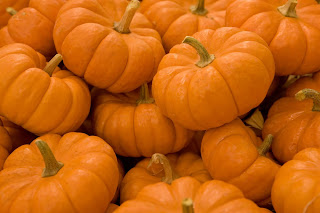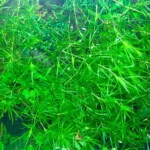
Pumpkin is an herbaceous plant that belongs to the Cucurbitaceae family. This plant originated in Central America. The cultivation of pumpkin began between 7000 and 5500 years before Christ in Mexico. Today pumpkin is grown on every continent except Antarctica. It is an important part of the human diet. It is also used as feed for animals. Pumpkins are sometimes grown for decorative purposes. The size, shape and color of the pumpkin depends on the variety. The name “pumpkin” is derived from the Greek word “pepon”, which means “big melon”. Pumpkins have been featured in numerous cartoons, films (such as Harry Potter), and fairy tales (such as Cinderella) due to their unusual morphology.
Around 80% of the US’ pumpkin crops are available during October.
Pumpkin grows in the form of vine. It produces numerous branches and can reach up to 30 feet in length.
Pumpkins consist of 90% water.
Leaves are large and dark green in color. They are divided in five lobes and have serrated edges. Leaves have prominent veins and they are covered with fine hairs.
It takes 85 to 150 days for a pumpkin to fully grow, depending on the variety.
Pumpkin develops male and female flowers on the same plant (monoecious plant). They are yellowish-orange in color and shaped like trumpet.
Pumpkins are actually a fruit. Many people think it should be our national fruit.
Flowers are pollinated by various insects, usually by honeybees.
The yellow-orange flowers that bloom on the pumpkin vine are edible.
Pumpkin is a fruit. It produces fruit of oval or spherical shape that is usually orange in color. Certain types of pumpkin develop green, yellow, white or red fruit. On average, fruit weighs 6 to 18 pounds. Largest ever recorded pumpkin had 1340 pounds of weight.
Native Americans grew and ate pumpkins and their seeds long before the Pilgrims reached this continent. Pilgrims learned how to grow and prepare pumpkins from the Native Americans.
All parts of pumpkin (root, stem, leaves, fruit and seed) are edible.
Early settlers dried pumpkins shells, cut it into strips and wove it into mats.
Pumpkin is rich source of vitamins A, C and vitamins of the B group. It also contains numerous valuable minerals such as potassium, magnesium and manganese.
Pumpkin has been prepared in a variety of ways from soups to stews to desserts since the immigration of the first European settlers.
Pumpkin can be consumed in the form of various sweet and salty dishes. Pumpkin pie is traditionally consumed for Thanksgiving Day. Biggest ever recorded pumpkin pie had 5 feet in diameter and 350 pounds of weight.
Roasted seeds are often consumed as healthy snack.
The ‘Pumpkin Capital of the World’ is Morton, Illinois. Home of Libby’s pumpkin industry.
Oil extracted from the seed is mainly used as dressing for salads and as an ingredient of soups and certain types of ice-creams.
The state of Illinois grows the most pumpkins. It harvests about 12,300 acres of pumpkins annually.
Pumpkins were used in the past for the removal of freckles and as a first aid for snake bites. Pumpkin can improve function of immune and digestive system and alleviate rheumatic disorders. It is often used in a treatment of benign prostate hyperplasia.
The latest U.S. record (2019) for the largest pumpkin ever grown weighed in at 2,517.5 pounds by Karl Haist of Clarence Center, New York.
Pumpkin can be used as “medicine” for animals. Since this plant facilitates digestion, it can be used for treatment of constipation, diarrhea and hairballs in cats.
Pumpkins were once considered a remedy for freckles and snakebites.
Over 1 billion tons of pumpkins are produced each year in the USA.
Natural medicine practitioners have proven that consuming pumpkin seeds reduces the risk of prostate disorders in men.
Carved pumpkins illuminated with candles (known as Jack-o-lantern) are used as inevitable detail of Halloween night in the USA.
One cup of mashed pumpkin contains a whopping 245% of your recommended daily intake of Vitamin A.
Pumpkins are annual plants which mean that they complete their life cycle in one year.









